Butchering a Cornish Cross Hen
I wouldn’t normally recommend keeping a Cornish X meat bird past the normal butcher age of 6 to 8 weeks. If you can believe it, the hen on the left was a runt and wasn’t large enough to butcher at that age. I kept her for about one and a half years and she laid quite a few eggs for me. I hoped to hatch some of them but didn’t have any success with that experiment. Since she ate a lot more feed than normal laying hens and stopped laying eggs this fall, I decided to butcher her along with some other culled hens.
See also Can You Keep a Cornish X as a Laying Hen?
Problems with Keeping a Cornish X
Keeping these meat birds for longer than 8 weeks includes problems with their legs and feet, heart problems, and excess fatty tissue. This hen didn’t seem to have heart issues, but she always walked like it was an effort and you can see the sore pads on her feet.
I’m happy that this hen was able to live to the ripe old age of one and a half, and I’m happy to have a nice pot of chicken soup on the wood stove. But I think it was a good decision to cull her this fall.
Have you ever kept a Cornish Rock or Cornish X (both the same) for longer than the normal butcher age? Did it have health problems?

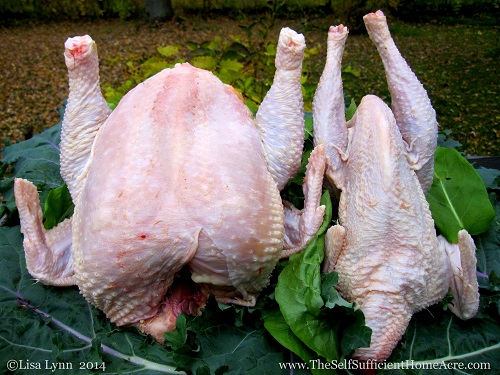

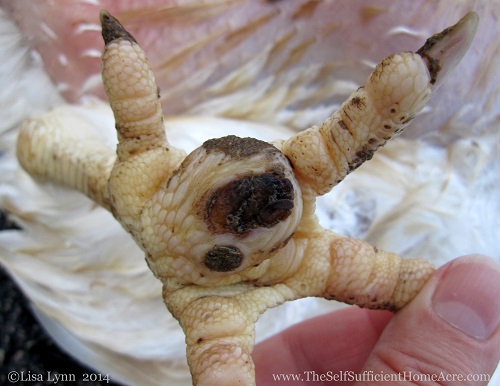
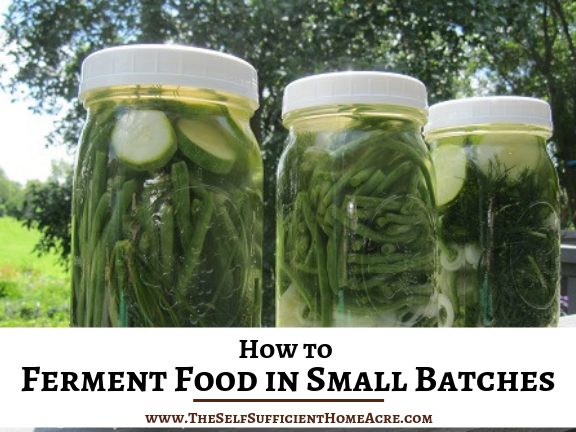
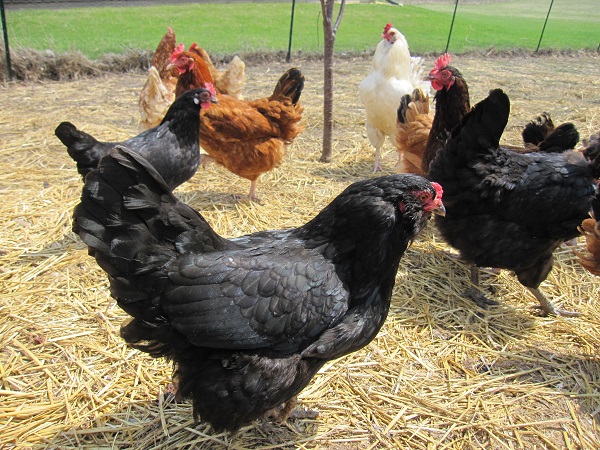
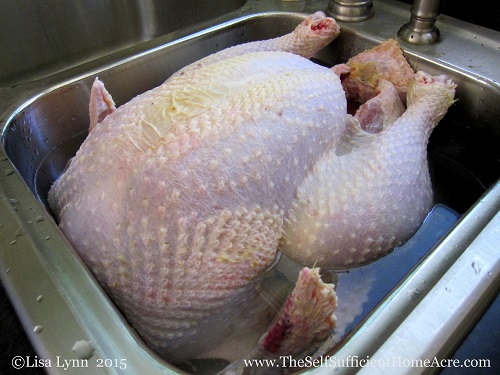
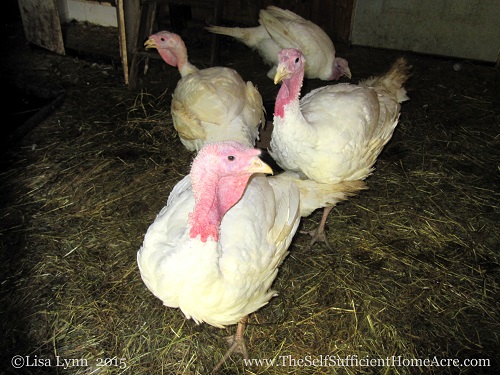
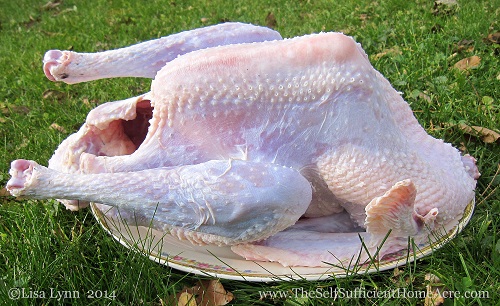

I have two rescued Cornish cross hens. They were be8ng used in a horrible ritual. Their combs are a pale color. Is that normal? I do not want to take them to a vet as they are looking healthy, eating, drinking and good poop. I am keeping them as pets. Your blog is so helpful.
Hi Lu,
It is normal for hens to have darker red combs and wattles when they are in laying condition. When they are not laying eggs, the combs and wattles are normally much paler in color. This is typical if they are too young to lay eggs or if they are in a molt.
My guess would be that your rescued chickens are too young to lay eggs and they are technically called pullets up to the age of 1 year. Most likely, with good treatment, they will start to lay eggs at around 6 months old and their combs and wattles will color up at that point.
Best wishes with your pets!
hello. I kept a cornish cross hen, they are ross28 type. she was so cute always coming out of the group with a funny face asking for food. so I named her gimme. she is kinda of ok given her weight, now she weighs as much as my big rooster. she walks normally, but she is really heavy. Is that a big problem, I mean can she just be a large hen?
Hi Marco,
I have kept the meat hens longer than recommended and some of them were fine for a year or two, but they ate a lot more feed than laying breeds, and one developed bumble foot. But it will depend on how heavy she gets.
I hope she does well for you!
Thanks for the great info. We’re fairly new to homesteading and just purchased our first Cornish chicks at the amazing price of 25cents a piece. For the purpose of culling. So your sight was very helpful. Blessing to yall
Hi Denise…that’s super! Yeah…I’d pick up a bunch at that price, lol! I’m happy that this post has been helpful. Glad to have you here. 🙂
Where did you get them for that price?
Hi Evelynn,
That comment isn’t recent, so I don’t know that Denies will see your question. I have ordered the broiler chicks from Sunnyside Hatchery in Beaver Dam, Wisconsin for around $1.55 … that’s the best price I’ve found so far.
I tried to keep a bunch for breeding the year I did meat birds, but wasn’t successful due to a resident mink. Recently, though, I acquired a cx hen from a friend who had given it to me to slaughter and eat because she’d gone lame and could no longer stand up. I put her on a starvation diet in my bathtub (veg only, NO carbs or protein!) and about a week later she flew out of the tub. Now, she is living in her own private suite (so I can restrict her feed intake – the main flock is free-fed) outside and she just started laying 🙂 I’m going to put one of my heritage bantam cornish roosters in with her today; I think that mix should work really well, as the bantams I’ve butchered are just as meaty and delicious as a grocery store fryer 🙂
Thanks so much for sharing this, Agnes! It’s pretty amazing how much food the Cornish x can put away and of course it’s hard to walk when they weigh so much. That’s great that you are able to try this out. I hope you’ll stop by and let me know how that cross breeding experiment works out!
We acquired 5 cornish rocks. We did not know what we had taken untill i went on line and researched the name. I was amazed by the bread. If i butcher all then how do i go about raising more? I would have to get a cornish and a Plymouth rock to bread and keep then separated from my other chickens?
Hi Karen,
Because the hatcheries that raise them carefully gaurd their secret breeding programs, it is unlikely that you will come up with a bird that grows as quickly and as large. But the original cross was the Plymouth White Rock crossed with Dark Cornish. You might be able to keep a Cornish X pullet (a hybrid) and breed it to a heritage rooster to raise larger, faster growing offspring…but I found that my Cornish X pullet got so large that she had sore feet all the time.
Best wishes and let me know if you try breeding your own meat chickens!
I had a Cornish X hen live to be 12months before being taken by a predator. She payed well and they were fertile. I hatched a couple of them crossed with New Hampshire. Very large healthy offspring!
*laid
Thanks for the information, JD! I always wondered…I might have to order some more to try this project again. 😉
Lisa we have actually had some meat chicken whose legs got so bad they couldn’t walk. It was so sad to watch them until we could butcher them.
Hi Tracy,
Yes, when they are eating all the time and gaining weight too fast they can outgrow their ability to move properly. I keep telling myself that I won’t order meat birds again, for many reasons. Then I look at my skinny little laying hens! The jury is still out on that decision. 🙂
NO, I couldn’t imagine feeding one of these for that long. They ate all. the.time! We even had one or two die before butcher time.
Hi Joyful,
I have noticed a reduction in the amount of feed since the five hens were butchered, which is expected, but this was more than I expected. Yes, she ate a lot, but she was fun to watch too. She would go outside to enjoy the day and her antics were pretty funny. But alas, it was time.
I never actually had any die from over eating, but they also had pasture and I didn’t give feed in the evening. Thanks for sharing your experience!
Very interesting! The cornish cross is so much bigger than the other one – is that usual, or is it because she was allowed to live so much longer? How much did she weigh? I have heard (at a heritage chicken workshop) that cornish crosses are sterile – which probably answers why you couldn’t get any chicks. Were her eggs as tasty as your normal laying hen’s eggs? Have you let any of your other cornish crosses live more than 8 weeks? Sorry, lots of questions, but I find this so interesting!
Hi Vickie,
Thanks for asking questions 🙂 The Cornish X hen is a hybridized meat bird that is raised for the large size and early butcher weight. I didn’t actually put her on the scales, but she felt as heavy as a 10 pound bag of flour, so probably close to that. I don’t know about the sterile eggs…they aren’t kept for eggs or for breeding. The eggs tasted the same and when she was young she laid as well as any of the other layers. I’ve never kept any other Cornish X for longer than the normal butcher age…they all grew to the expected size and were ready to go in the freezer.
Hope this answered all of your questions!
Yes! Thanks!
They are not sterile. On Backyard Chickens several people are doing a project using the regular dual purpose heritage cockerel over a CX pullet. Some are having success putting the CX gene’s in their breeding project.
Wow – good to know!
Thanks for the info, Linda! Maybe I will try again, with new hens.
My Jumbo Cornish XRocks are going on 6 months old. We are finally getting ready to butcher. We purchased 30 and only lost 3 to a hawk. We let them free reign with our laying hens during the day. They have gotten quite large, so I am curious to see if the meat will be tough. If anyone can let me know about the toughness to an older chicken, please let me know.
Thanks
Hi,
When I butchered the 1+ year old hen, the breast meat wasn’t tough, but the legs were a little bit chewy. I think at 6 months they shouldn’t be tough.